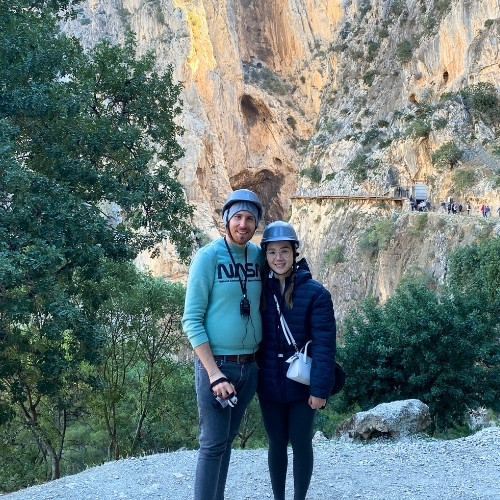The Granada Cathedral (also known as Cathedral of the Incarnation) is a Roman Catholic church that is sure to impress you with its rich history and gorgeous design.
Nestled in the vibrant streets of the city center, the Renaissance cathedral stands as a testament to the artistic and cultural fusion that defines Granada. Being 115 meters long and 67 meters wide, you’re really in for a treat.
Planning to visit? This is a complete guide with the history of the Cathedral, some insider tips, the Granada Cathedral tickets, and much more.
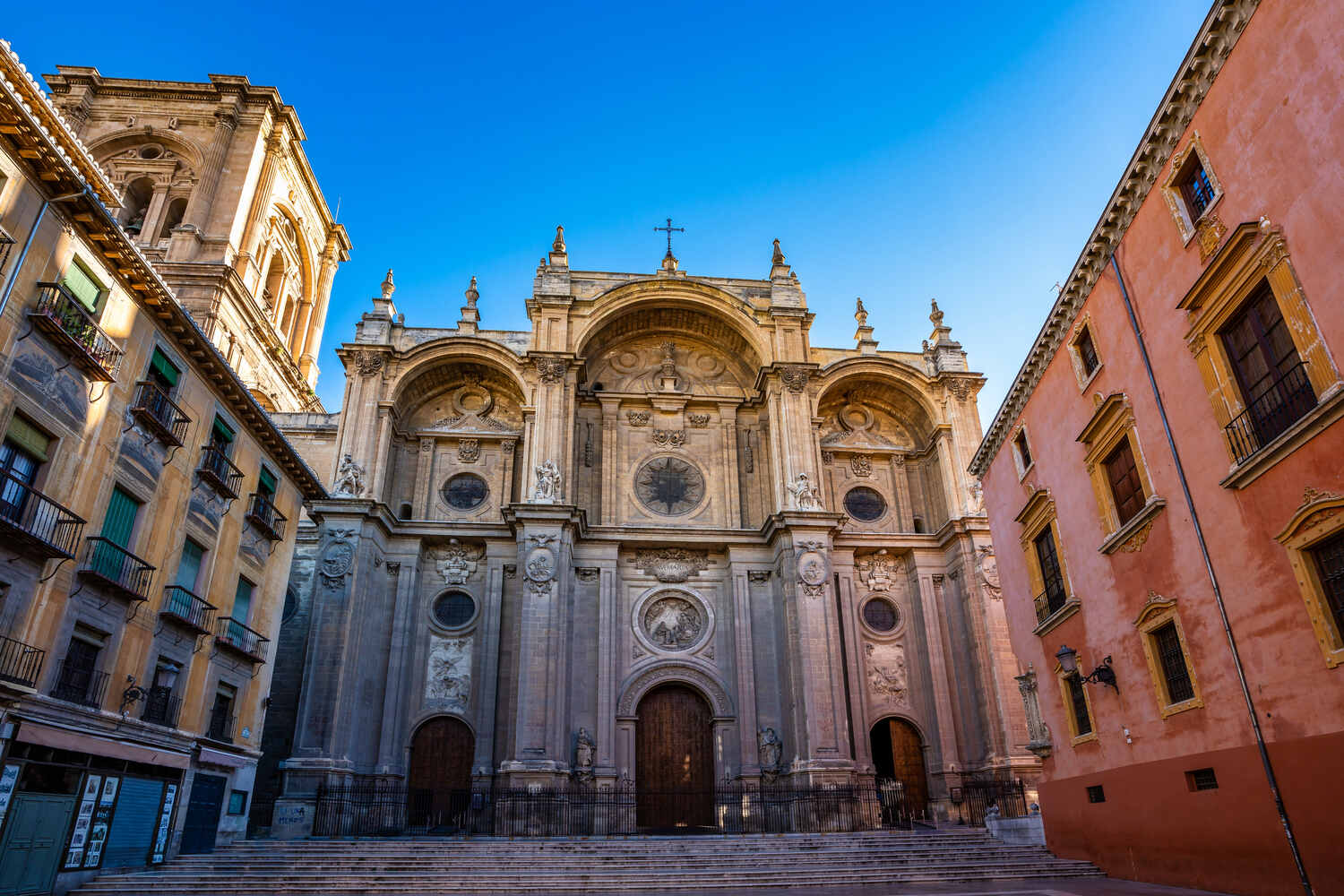
Summary: Visiting Granada Cathedral
Let’s start this guide with some essentials you should know about the Cathedral of Granada, such as its location, getting there, the best time to visit, and more.
Where is the Catedral De Granada?
The Catedral de Granada, officially known as the Cathedral of the Incarnation, is located in the heart of Granada, Spain. This magnificent Renaissance building stands at the Gran Vía de Colón, a major street in the city.
How to Get to the Cathedral of Granada?
The cathedral is centrally located, making it accessible on foot from many parts of the city. If you’re traveling around Andalusia by car, then you can easily park in Granada city centre and walk to the Cathedral.
Alternatively, you can get a taxi to the old town and simply walk there, which is affordable.
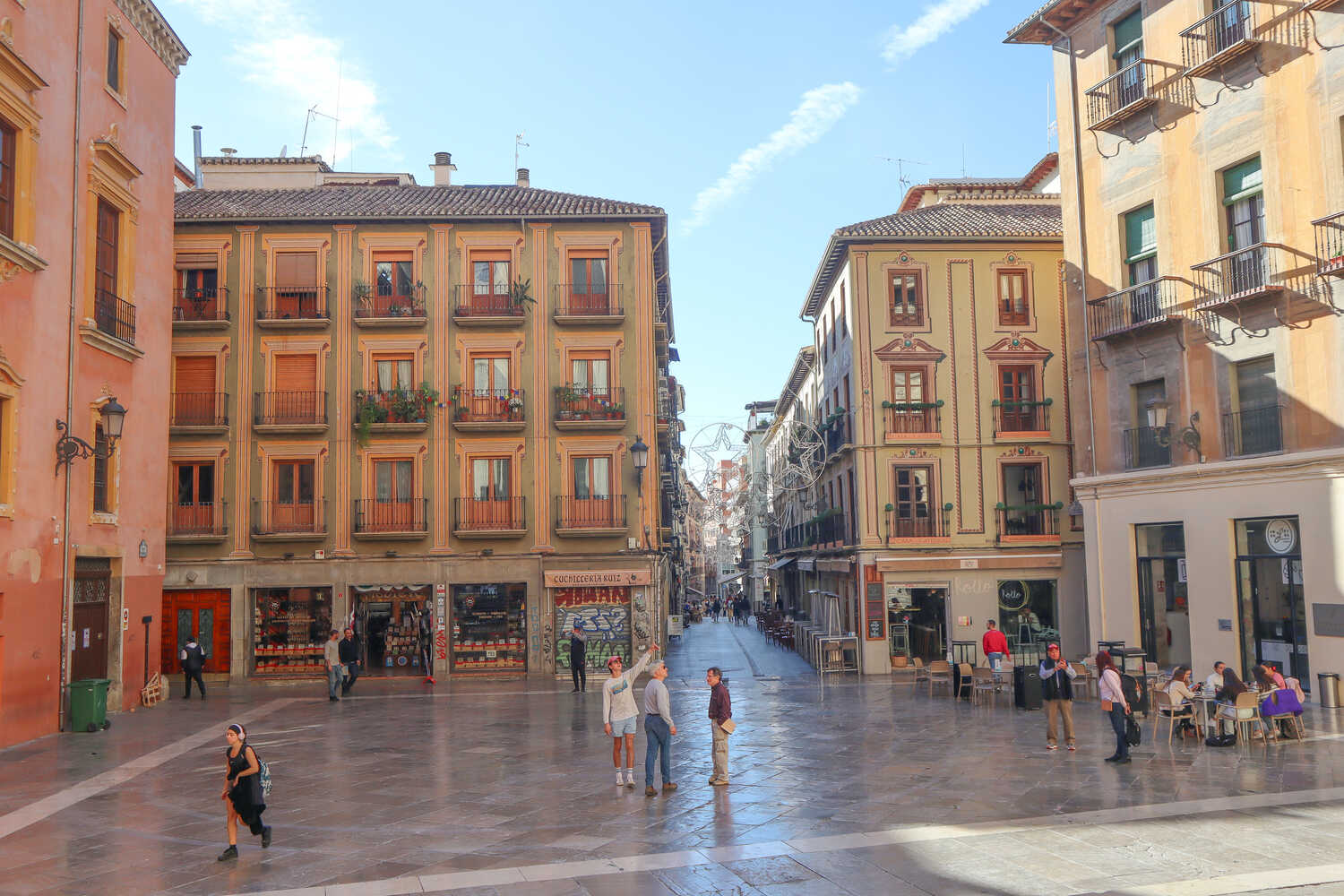
Granada Cathedral Opening Hours
The cathedral is open from Monday to Saturday, 10:00 AM to 6:30 PM, and on Sundays and public holidays, from 3:00 PM to 6:00 PM.
Best Time to Visit Granada Cathedral
The best time to visit is during the spring (April to June) or fall (September to November) when the weather is mild and the crowds are smaller.
I recommend visiting the Catedral de Granada after your visit to the Alhambra, which makes a perfect break after walking around the complex for a few hours.
Granada Cathedral Tickets
Here are the Granada Cathedral Tickets and best guided tours I recommend buying before coming to secure your spot. These tours are popular and sell out very quickly, and you surely don’t want to miss the opportunity!
What to Expect at Catedral de Granada
Visiting the Catedral de Granada is like stepping into a world of beauty and history, and you won’t regret visiting one of the most imposing monuments in the city.
One of the first things you’ll notice is the amazing stained-glass windows and the Renaissance style. They fill the place with bright, colorful light, making everything look even more special.
But of course, there’s more to it. Here below, I’ll go through each section that the Cathedral includes, from the exterior to smaller details inside.
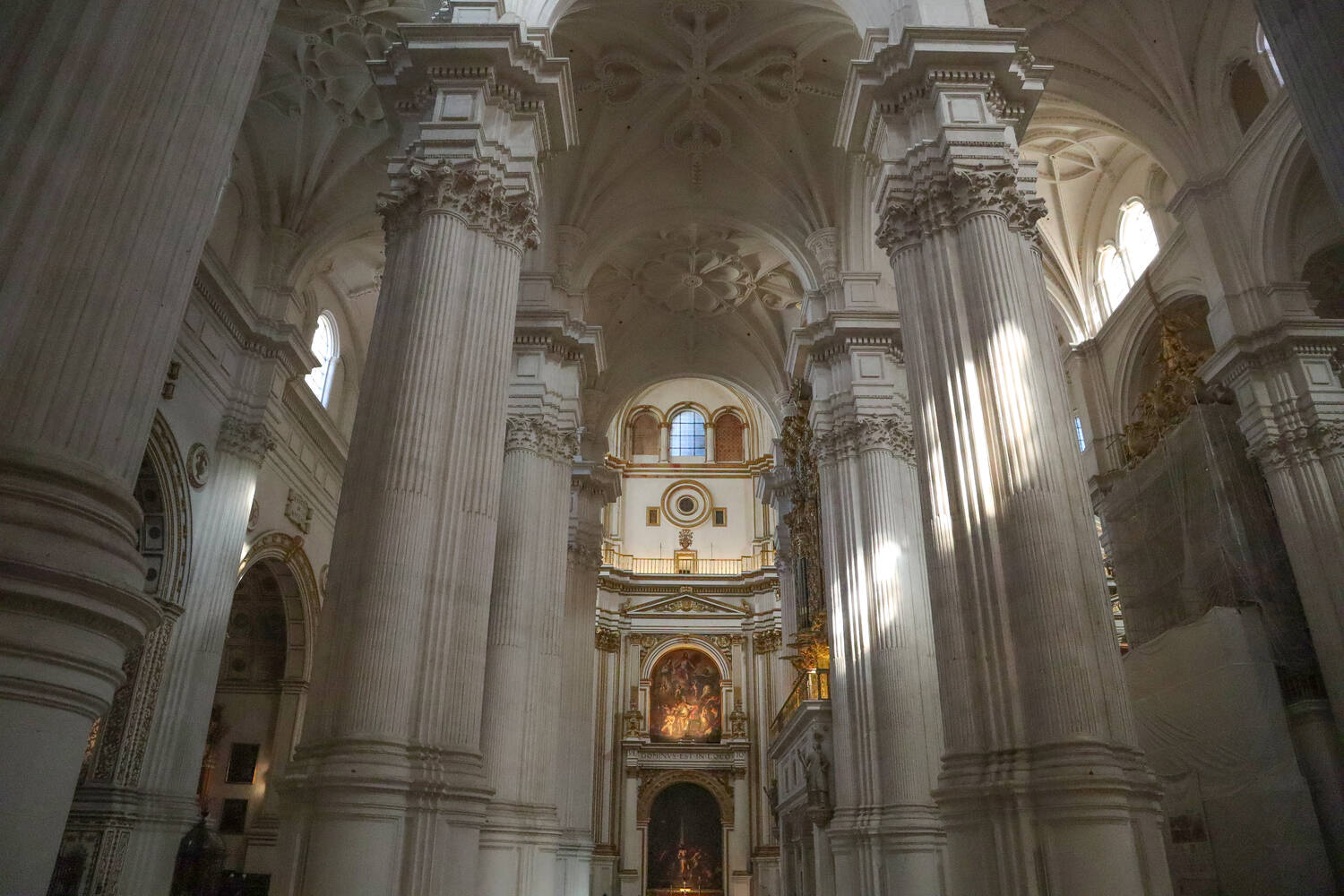
The Facade
The facade of Granada Cathedral is a masterpiece of Spanish Renaissance architecture, showcasing a harmonious blend of styles and intricate details.
Designed by Architect Diego de Siloé in the 16th century, it features a grand entrance flanked by Corinthian columns, with three doors corresponding to the nave and aisles inside.
The central part is adorned with sculptures and reliefs depicting religious themes, crowned by a magnificent pediment. This exterior not only reflects the artistic vision of its creators but also sets the tone for the stunning site inside.
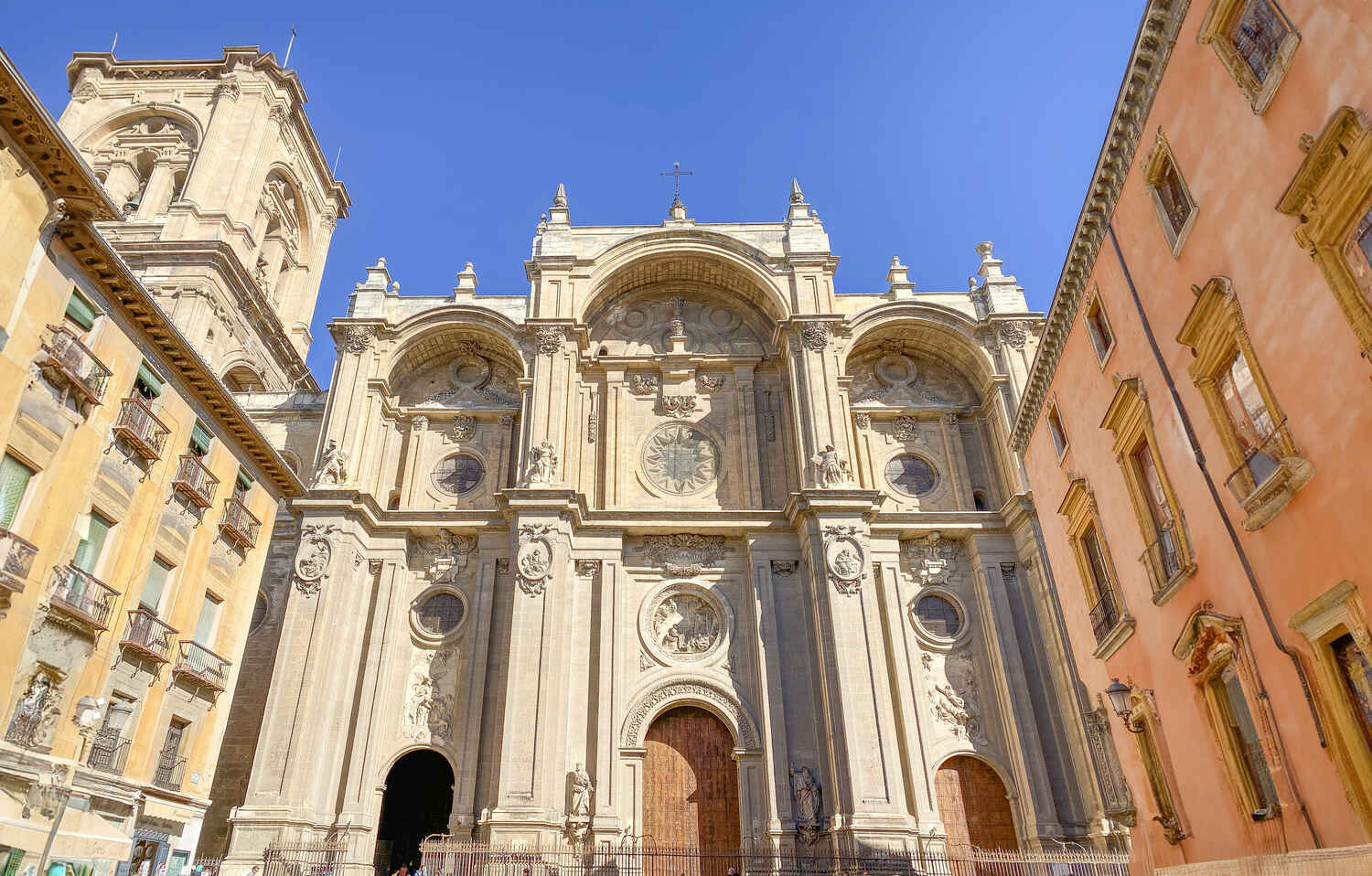
Diego de Siloé’s Cathedral Design
Diego de Siloé’s design for Granada Cathedral marked a significant departure from Gothic traditions, embracing the Renaissance ideals of harmony, proportion, and light.
Initiated in 1518, his plan introduced a circular capilla mayor (main chapel) and a series of chapels encircling the nave, creating a unique spatial experience.
Siloé’s innovative use of space and his integration of sculptural elements into the architecture itself were groundbreaking, establishing the cathedral as a seminal work of the Spanish Renaissance.
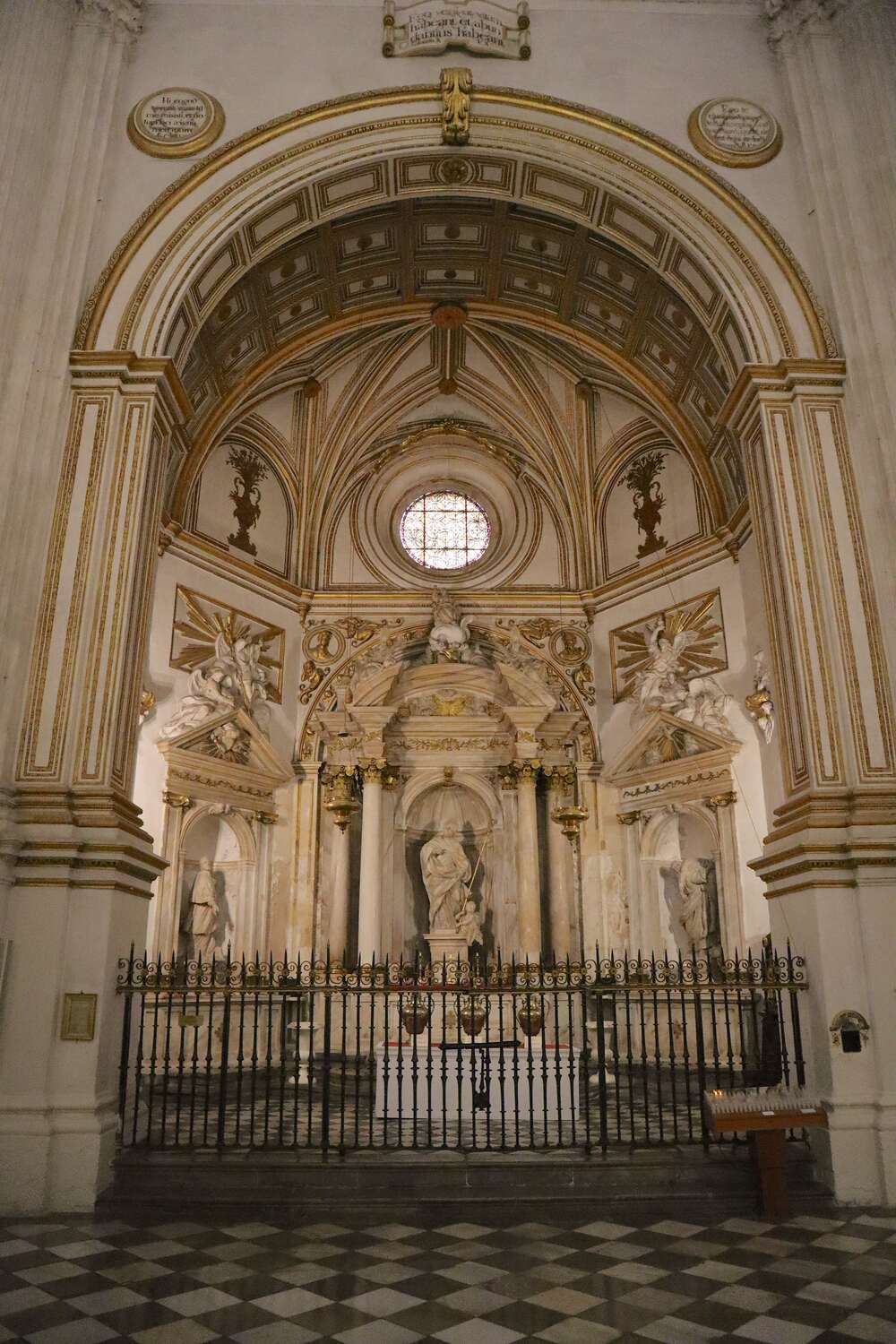
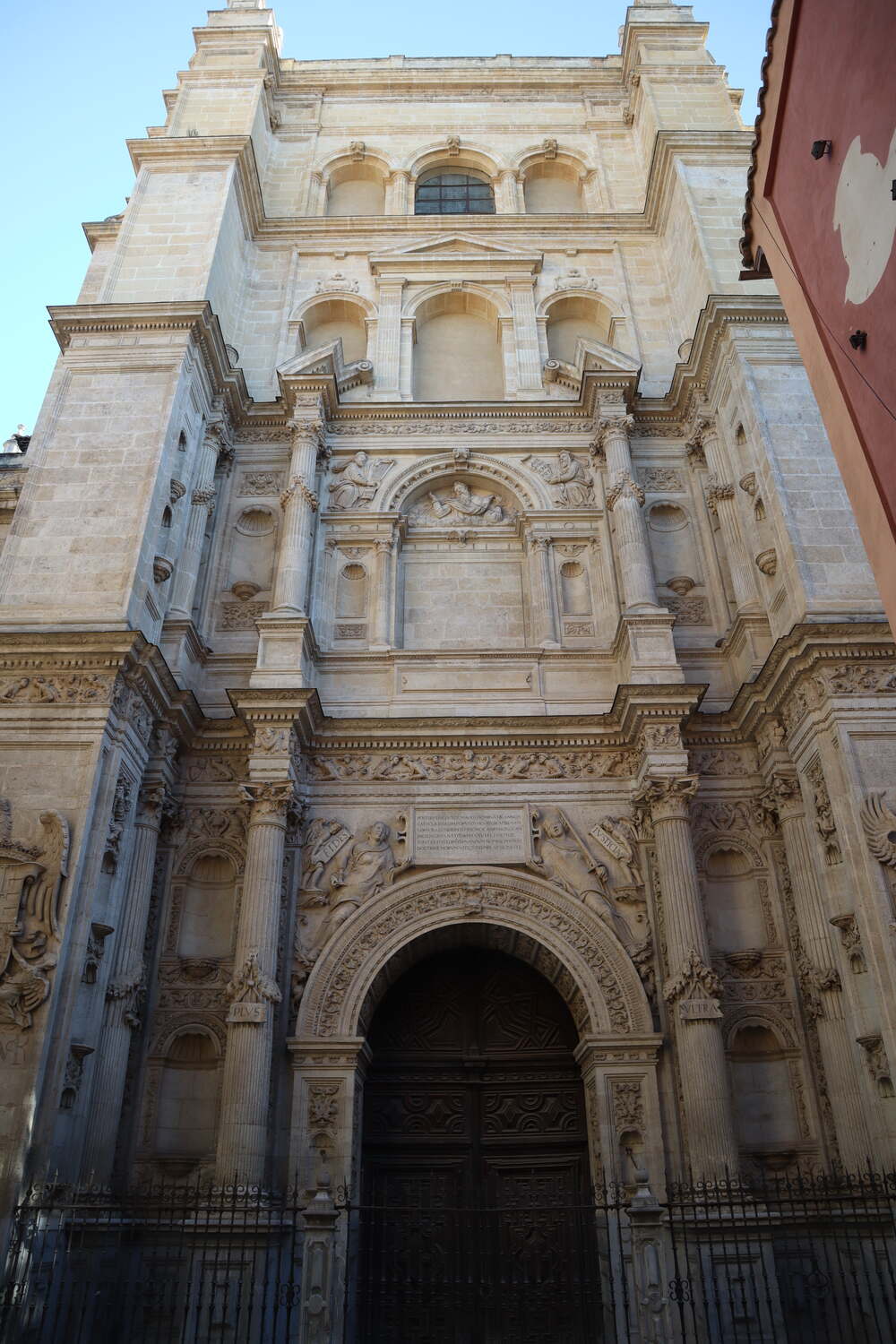
The Cathedral’s Cupola
The cathedral’s cupola, situated above the main altar, is a marvel of architectural and engineering skill. Designed by Alonso Cano in the mid-17th century, it allows light to filter into the interior, illuminating the altar and the area around it.
The cupola’s intricate frescoes and ornamental designs enhance its structural elegance, contributing to the cathedral’s atmosphere of divine transcendence.
This feature is not just an architectural achievement but also a focal point of spiritual and artistic expression within the cathedral.
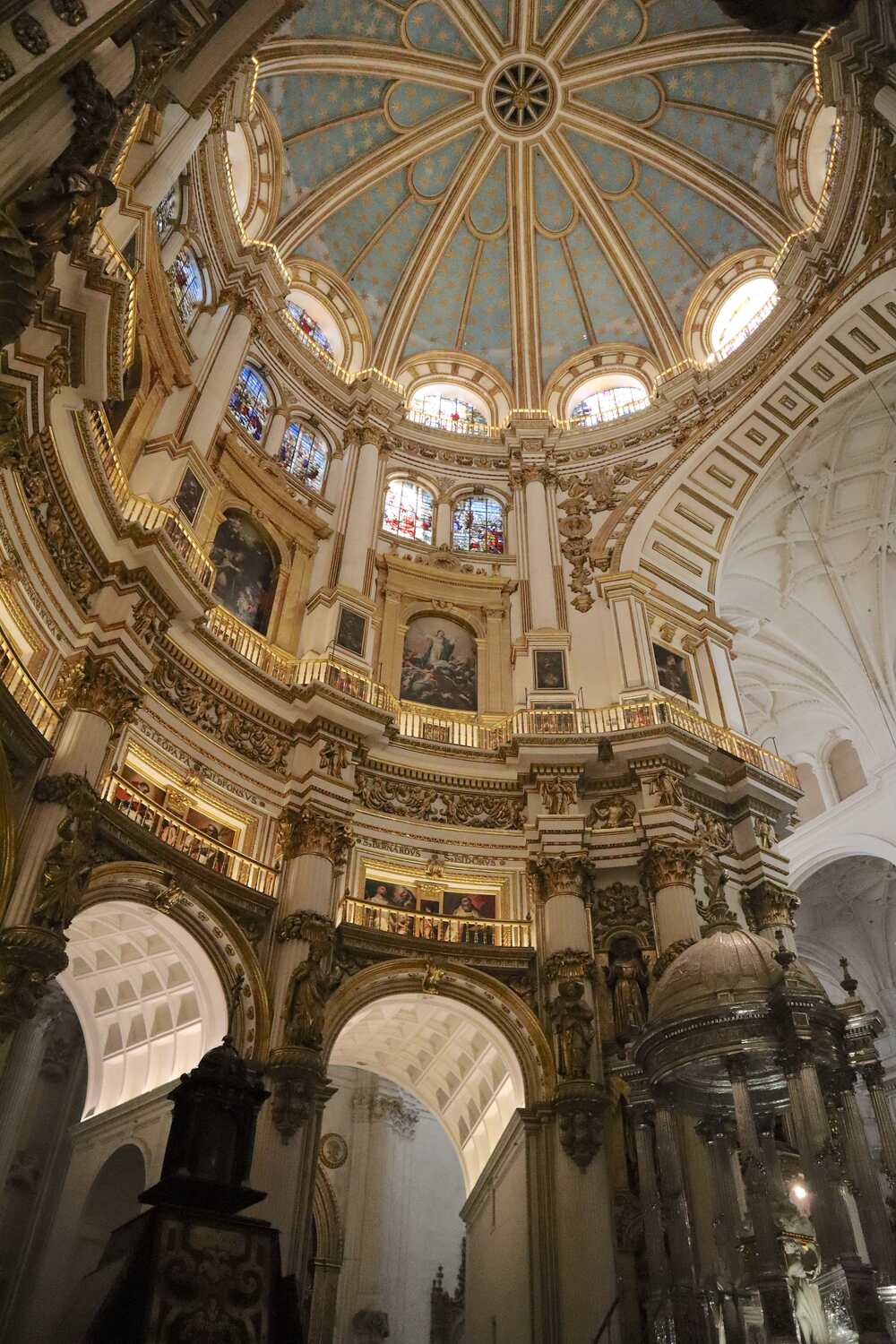
The Door of Forgiveness
The Door of Forgiveness (Puerta del Perdón) serves as a prominent entrance to Granada Cathedral, and has a deep historical and symbolic importance.
According to tradition, pilgrims passing through this door, especially during designated Holy Years would receive indulgences, a practice rooted in centuries of faith and devotion.
The door itself is adorned with elaborate biblical scenes and motifs that illustrate the concepts of redemption, mercy, and divine forgiveness. These decorations serve as visual sermons, teaching and reminding visitors of the core values of Christianity.
Also, the Door of Forgiveness stands as a testament to the cathedral’s enduring role not only as a monumental structure of worship but also as a symbol of hope and spiritual sanctuary for believers.
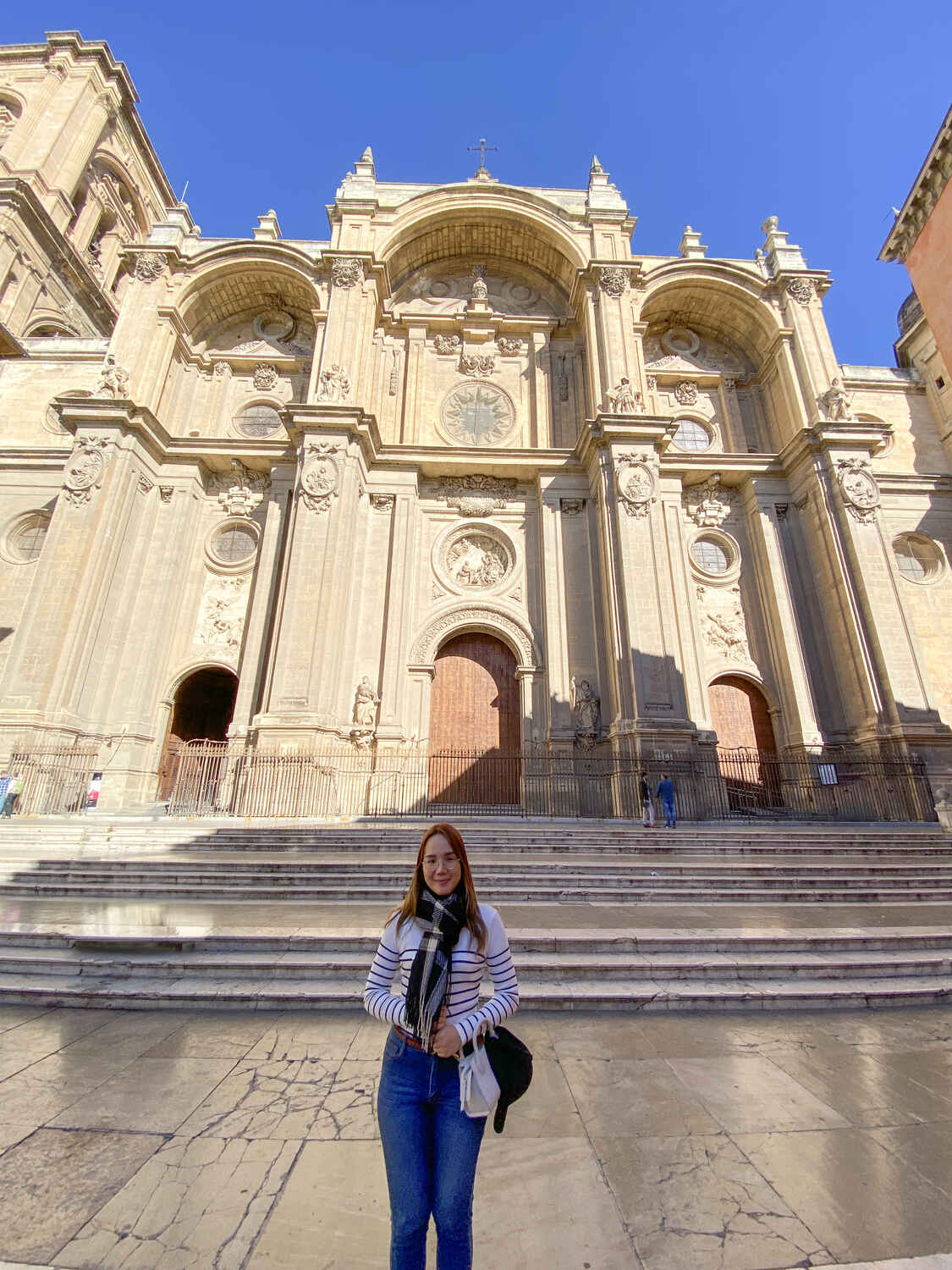
Symbolism of the Main Chapel
The Main Chapel inside is a special place that shows what Christian faith is all about, and the Gothic floor plan makes the site even more beautiful.
Unlike most church areas that are shaped like rectangles, this chapel is round, which is a way to show that God’s love and presence.
Right in the center, there’s a big altar that catches your eye because it’s covered with beautiful sculptures and pictures. These artworks show stories from the Bible and the life of Jesus, helping you to understand important religious teachings in the most beautiful way.
It’s a quiet place where anyone can pray, think, or just feel closer to God. The Main Chapel uses its design and decorations to help people feel hope, love, and the kindness that comes from faith, making it a very important part of the cathedral.
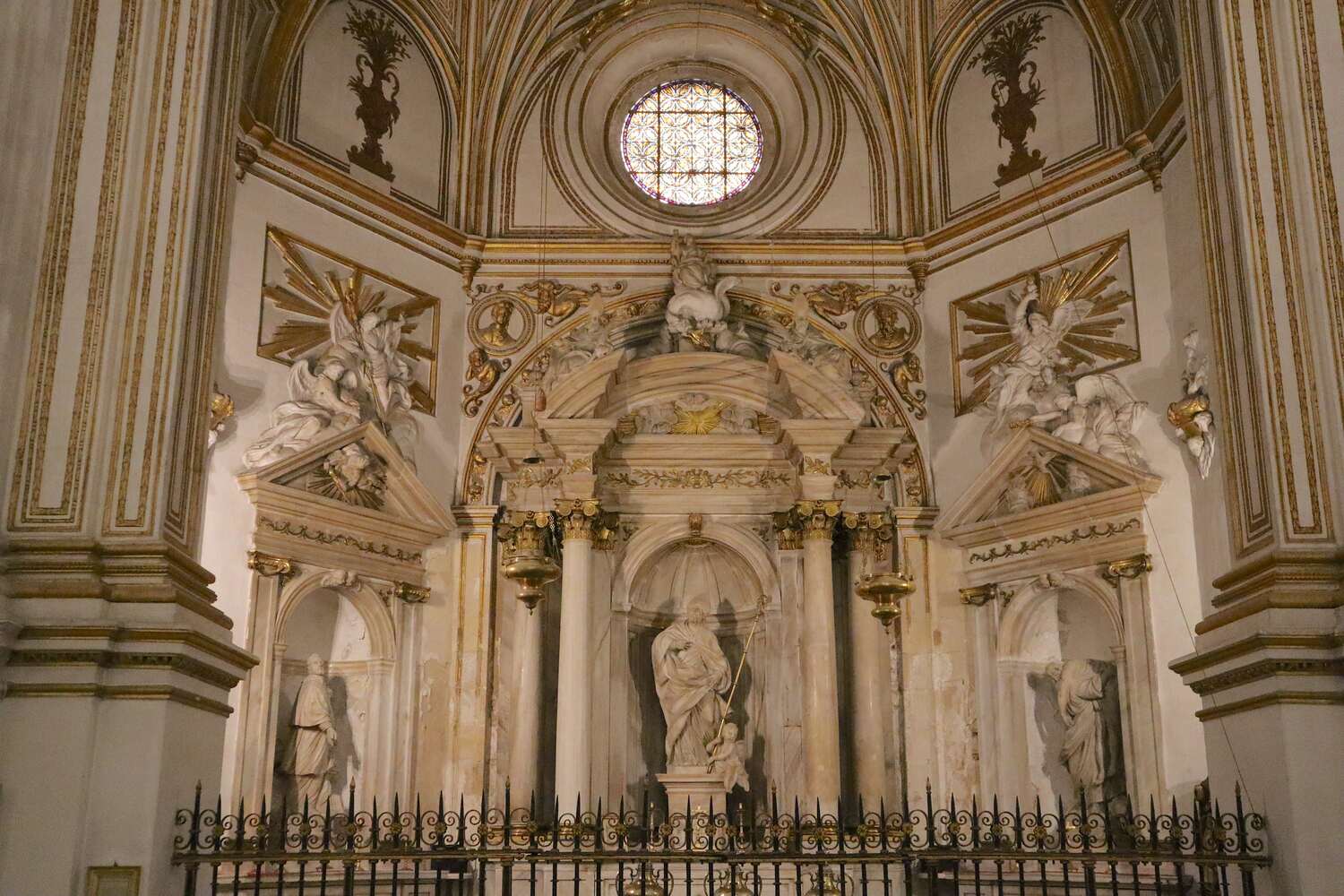
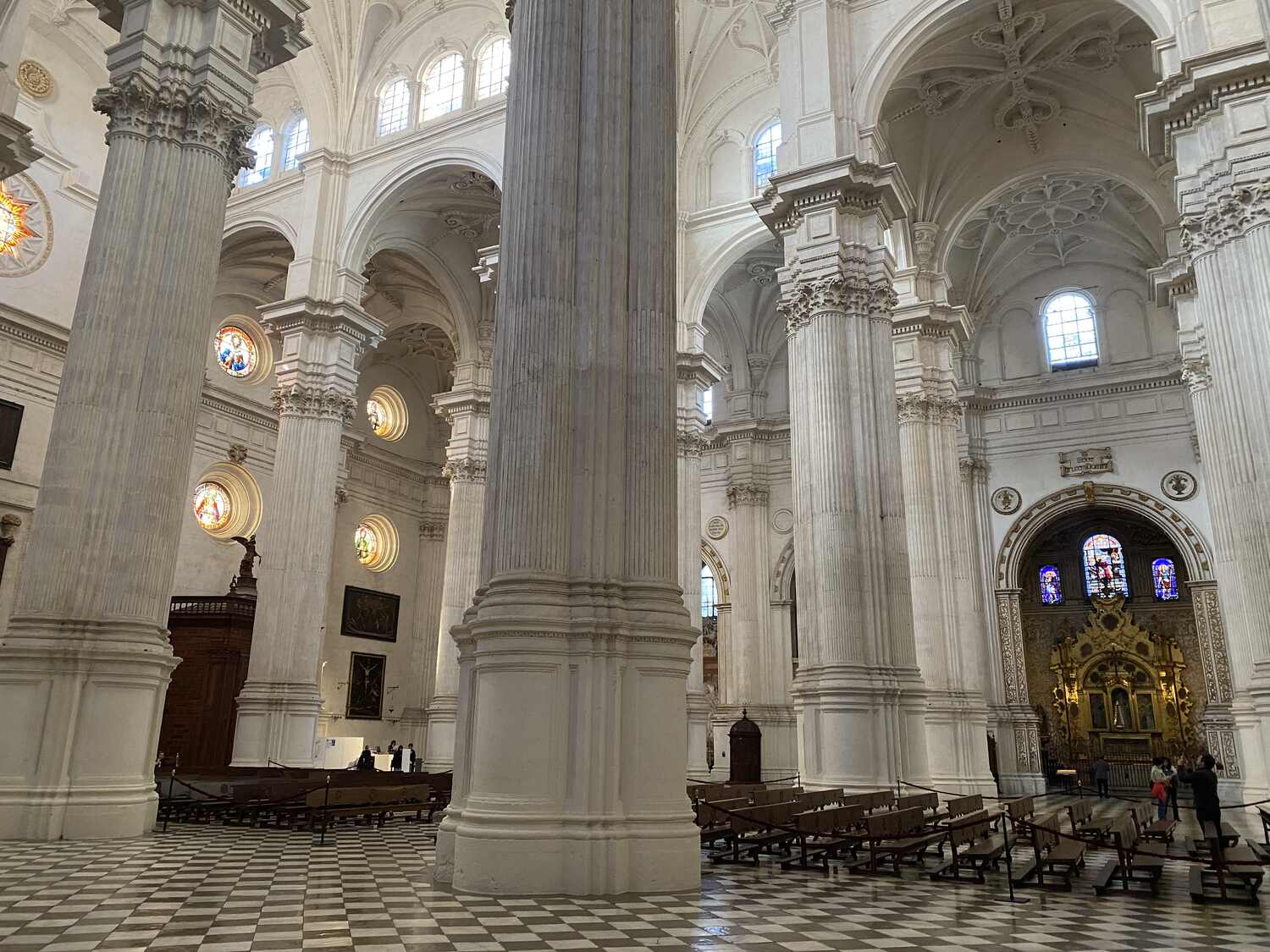
History of the Cathedral of Granada
The Cathedral of Granada, dedicated to Santa María de la Encarnación, holds a unique place in Spanish history and architecture.
The construction begun in 1518 in the heart of the old Muslim Medina, marks a significant moment following the 1492 acquisition of the Nasrid kingdom of Granada from its Muslim rulers.
This transition not only symbolized a change in power but also ushered in a new architectural era. Initially, the cathedral’s design was influenced by the Gothic style, as seen in the Royal Chapel of Granada by Enrique Egas.
However, as the Spanish Renaissance began to flourish, it brought about a shift in architectural preferences, moving away from the Gothic tradition.
The cathedral’s foundations were laid by Enrique Egas between 1518 and 1523, replacing the city’s Royal Mosque (which was at the time the main mosque), a symbolic act representing the Christian reconquest.
By 1529, Diego de Siloé took over the project and brought his style to the cathedral for nearly four decades.
Diego de Siloé mixed a round dome, common in Renaissance design, with a Gothic-style layout for the cathedral. Instead of the usual half-circle end part, he made the main chapel round.
This idea was inspired by Italian Renaissance designs for “perfect buildings,” like the ones Alberti talked about, and followed classic architecture rules.
In 1667, Alonso Cano, alongside Gaspar de la Peña, brought Baroque influences to the main façade, diverging from the initial plans.
The construction of the cathedral lasted 181 years, and the changing architectural styles makes the Granada Cathedral a unique religious site in Spain.
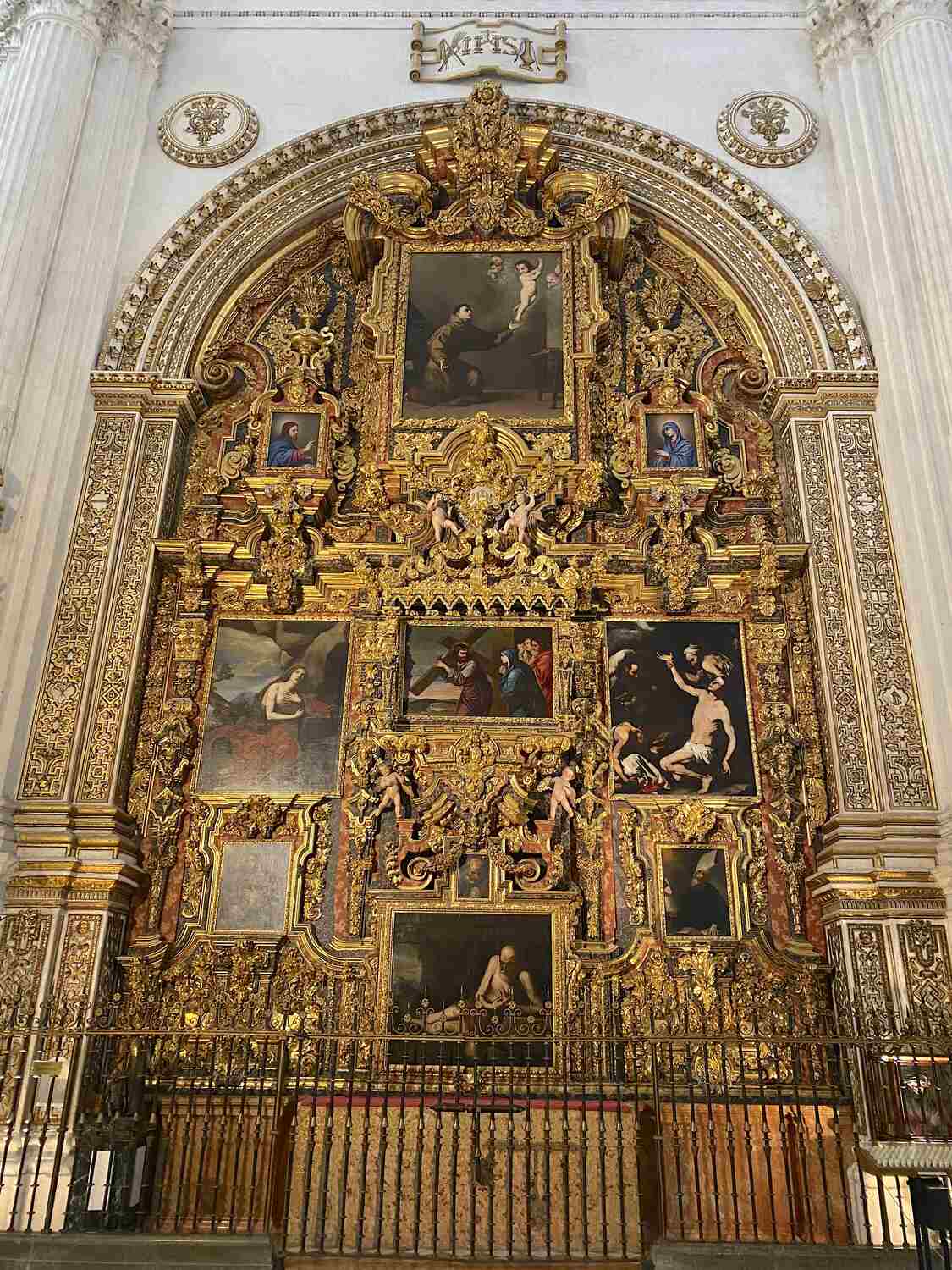
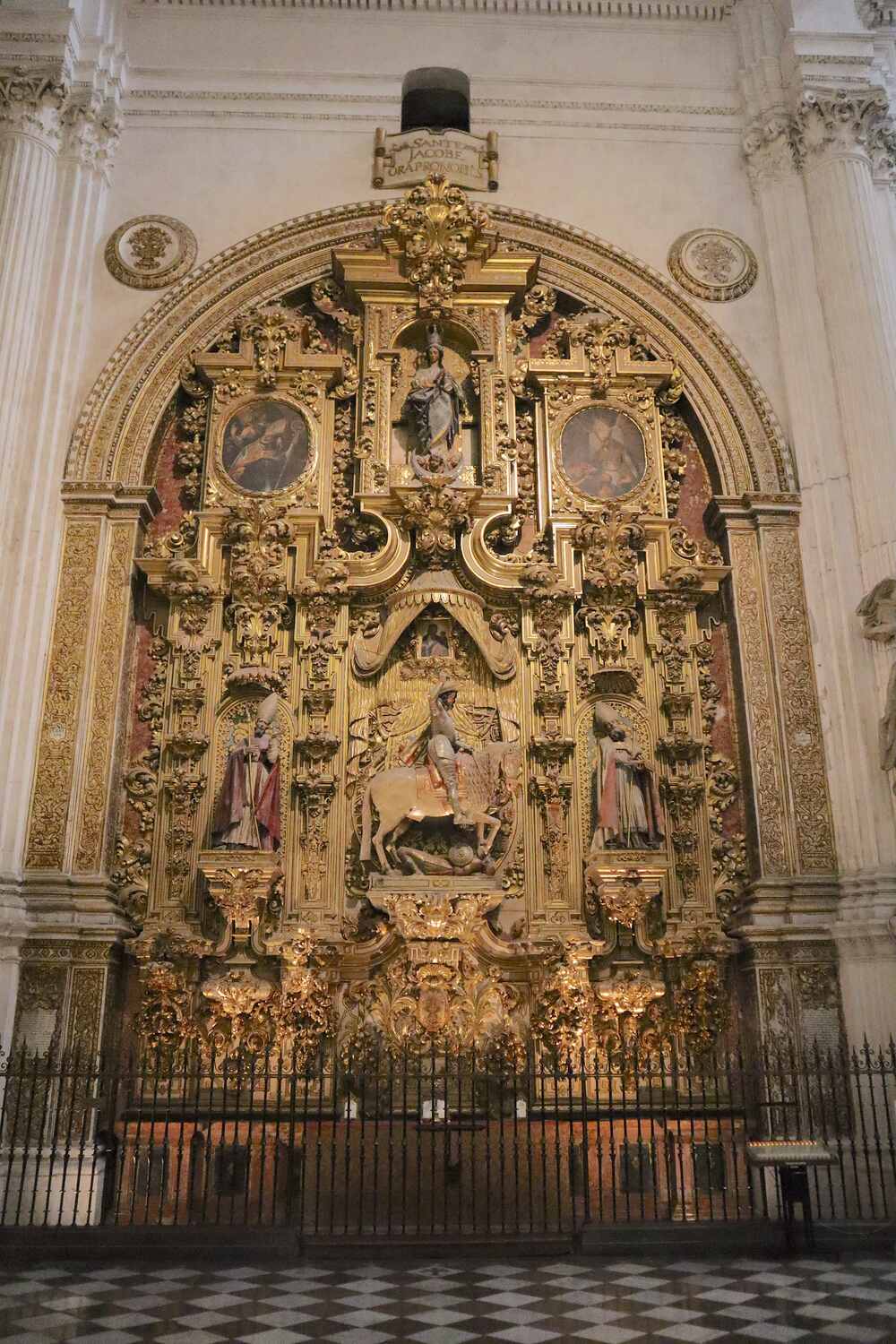
Cathedral of Granada – FAQ
Now that you know everything about the Cathedral, let’s answer some questions from first-time visitors that may be helpful to you too.
Is the Cathedral of Granada Worth Visiting?
Yes, Granada Cathedral is definitely worth seeing, and you just can’t skip when visiting Granada for a day or more.
It’s a gorgeous church in the middle of Granada, Spain. Inside, you can see amazing artwork and learn about Spain’s history. The mix of designs from different times makes it special too.
Where to Buy Tickets?
You can buy the tickets at the entrance or online. Buying online is a good idea because you can make sure you get in on the day you want to visit. In fact, occasionally, the Cathedral closes for special events, so that’s something to keep in mind.
Can You Visit the Cathedral and the Royal Chapel at Once?
Yes, you can visit both in one trip. They are right next to each other in the center of Granada. However, you need a separate ticket for each place.
The Royal Chapel serves as the final burial site for Spain’s Catholic Monarchs, which is yet another important site in Granada.
Many guided tours of the Catedral of Granada include both, so going with a guide is a good idea not only to see both sites but also to know the history of the Royal Chapel.
Where to Stay in Granada?
Now that you know everything about this Alhambra travel guide, let’s talk about where to stay in Granada, Spain for all budget, from premium properties to more humble, affordable ones.
Luxury: Áurea Washington Irving Hotel
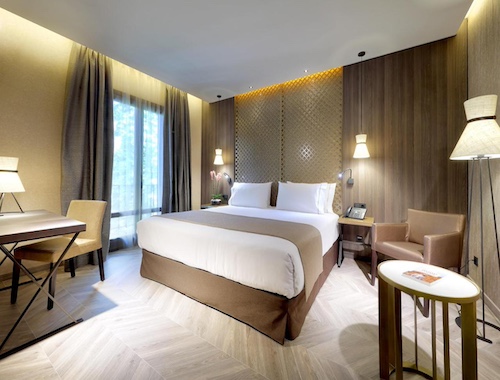
Mid-Range: Hotel Santa Isabel La Real
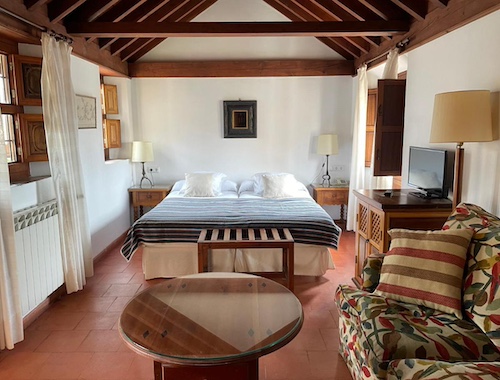
Budget: Oripando Hostel
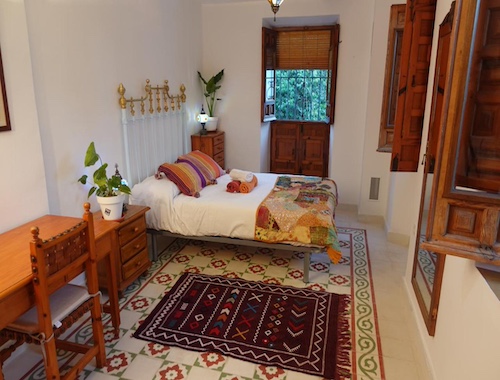
Conclusion About the Cathedral of Granada
In conclusion, visiting the Cathedral of Granada is an experience that captures the essence of Spain’s glorious past and artistic heritage. Yes, visiting places like the Alhambra is a must, but the cathedral just complements your trip beautifully.
Thanks for reading until the end and I hope this guide was helpful for you to plan your trip!

